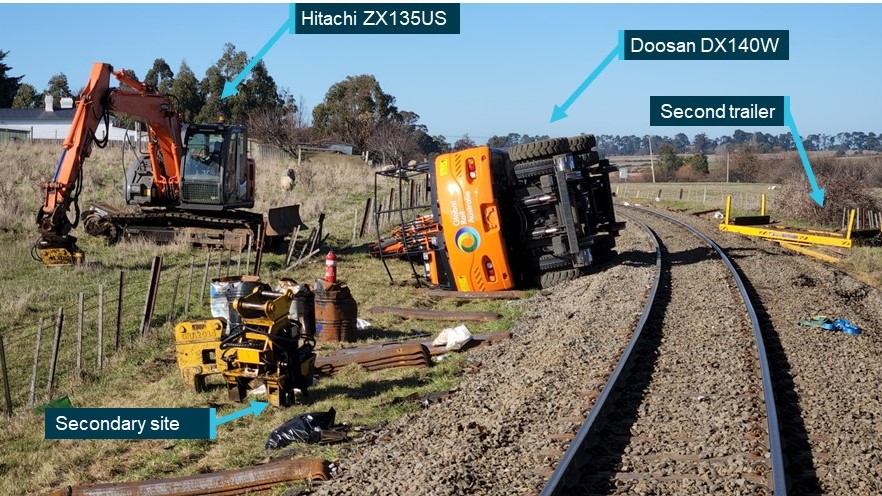Hi-rail Excavator Operating Beyond Working Load Limit

A hi-rail excavator that toppled and fatally injured its operator during rail maintenance work was operating beyond its working load limit, an ATSB investigation report details. The wheeled excavator, which had been modified as a hi-rail vehicle for track work, was being used to lift an infrastructure trailer during planned maintenance work near the Evandale Road level crossing in Evandale, northern Tasmania, on 20 July 2022. The excavator was mounted on the track in hi-rail mode when during the lift it became unstable and toppled on its side.
The operator, who was the site supervisor, was fatally injured, and a spotter working with the excavator sustained minor injuries. "The total load being lifted, in combination with the configuration of the excavator, meant the lift was overweight for the excavator in both civil and hi-rail modes," Director Transport Safety Kerri Hughes said. "Based on signage within the excavator, it was very likely that the excavator was regularly exceeding the working load limit for both road and hi-rail modes for the works."
Further, a suspension oscillation lock system, which secured the excavator's upper structure (housing the cabin, engine and hydraulic systems) in a fixed position during a lift to provide stability and prevent unintended movement, was found to be disengaged. While the site supervisor was trained and qualified to operate the excavator, it was likely they had limited experience and familiarity with this specific excavator. As the infrastructure manager with oversight of the principal contractor, TasRail has, since the accident, taken several safety actions relating to the use of road-rail vehicle excavators in hi-rail mode.
This included an immediate embargo on their use in hi-rail mode, and a subsequent industry forum to devise a safe approach for the resumption of excavator operations. The forum resulted in the creation of a process flow chart for using earth-moving equipment as a lifting device, accompanied by a compliance checklist. "This accident reiterates the critical need for equipment to be operated by qualified and experienced operators, and that working load limits are actively validated before commencing a task," Ms Hughes stressed.
"Further, selecting appropriate equipment, fit for purpose, reduces the risk of administrative risk controls becoming a last line of defence."
/Public Release.This material from the originating organization/author(s) might be of the point-in-time nature, and edited for clarity, style and length.
Mirage.News does not take institutional positions or sides, and all views, positions, and conclusions expressed herein are solely those of the author(s).View in full here[1].